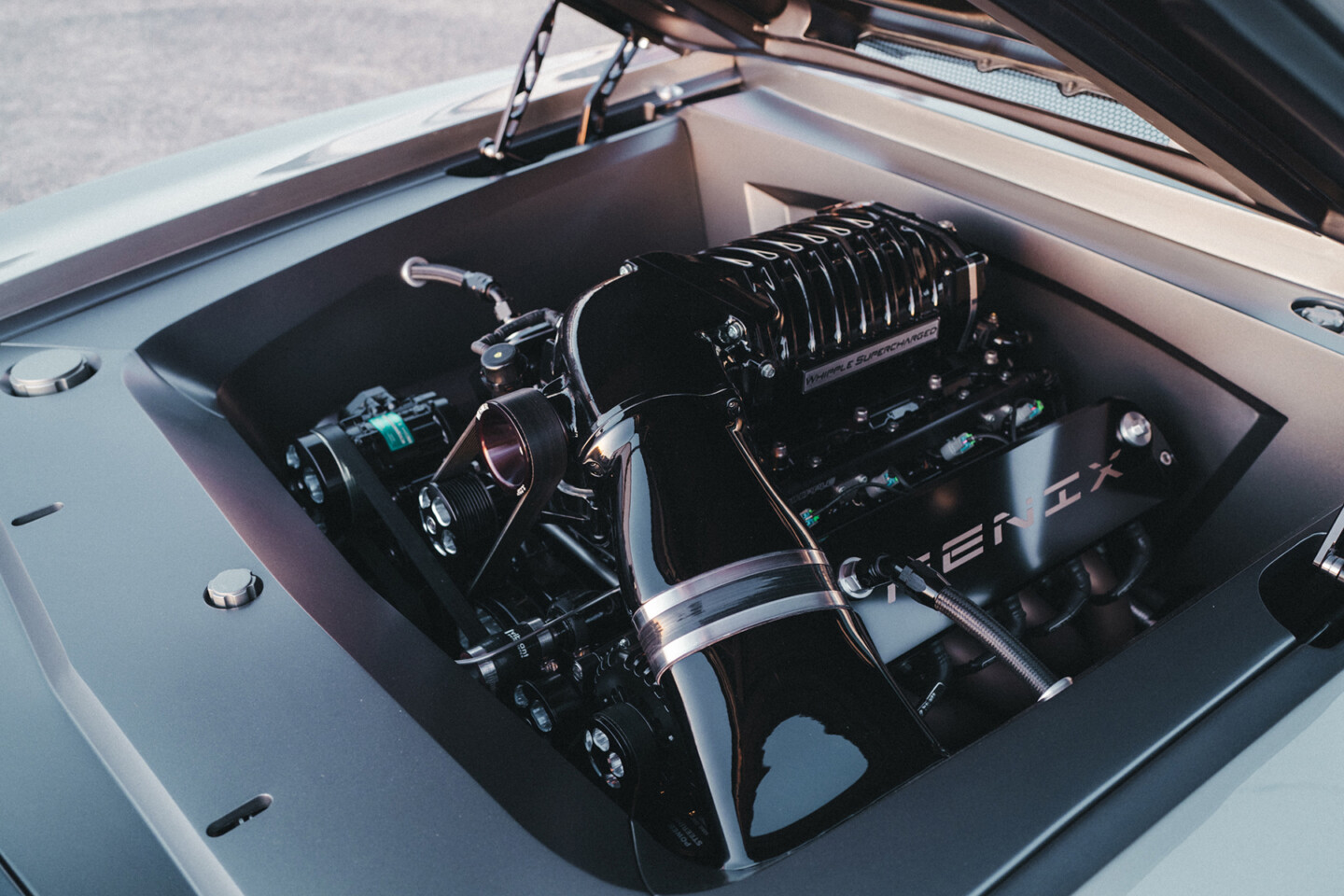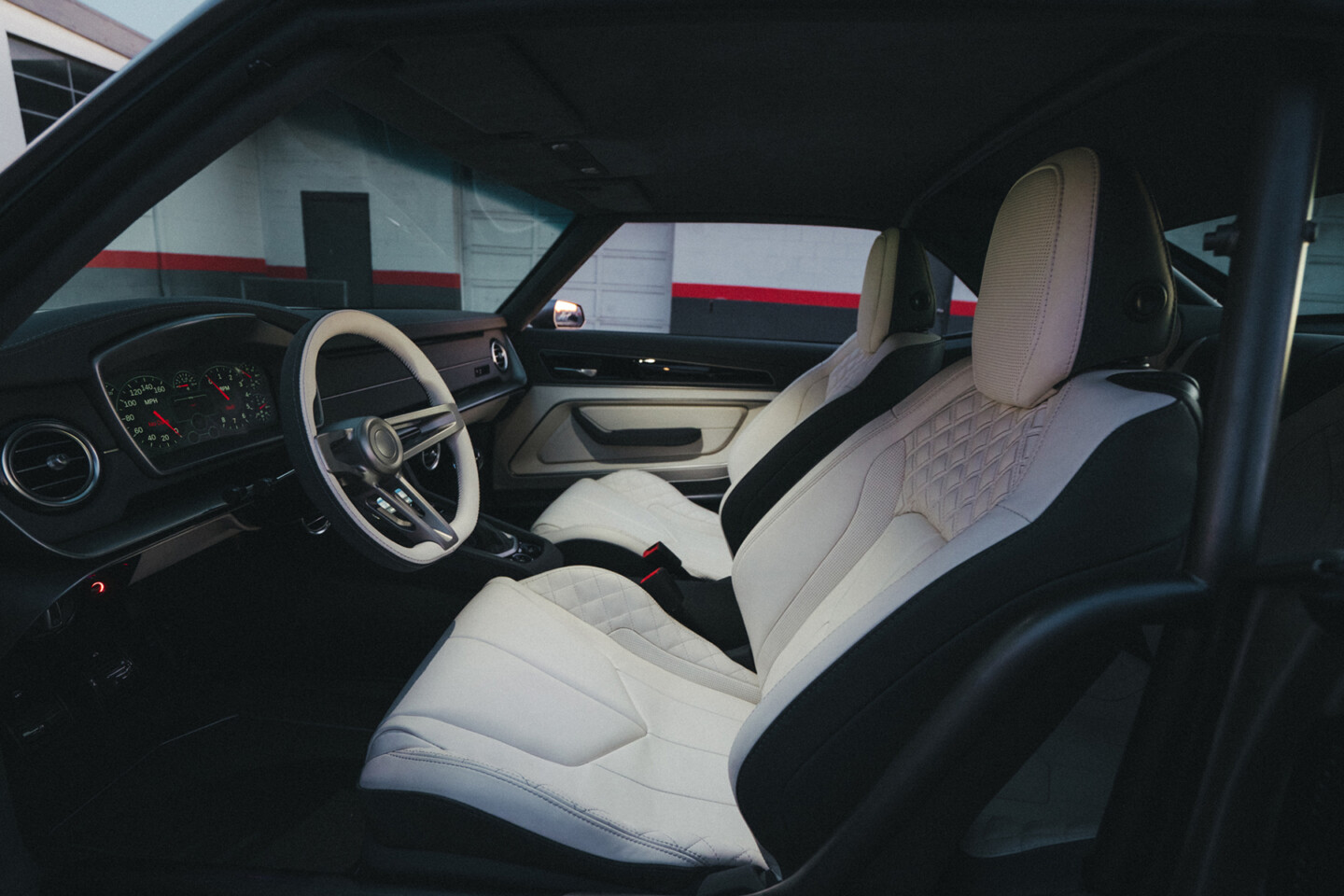It’s time for us to feature one of the most extreme Camaros we’ve seen in a long time. This unbelievably cool creation comes in the form of Michael Shield’s “Fenix” ’69 Camaro. The wild Camaro was built with an extremely powerful 1,180 horsepower 427cid LS7 engine, stout T56 manual transmission, and CAD-designed interior and exterior. But first a little backstory.
Michael enlisted vehicle designer Sean Smith at Sean Smith Designs in a build team led by Driven Speed Shop. Smith’s work in the past, starring in the Fast and Furious franchise as well as grabbing headlines at events such as SEMA, Goodguys, Grand National Roadster Show, and more, meant that Smith would be the perfect candidate for the job.

Builders will often seek to have a rendering drafted up before the actual car is built. This is both helpful to the car owner and builder(s) who now know the type of image, look, and style to aim for. In this case, the finished vehicle came remarkably close to the Sean Smith Designs rendering.
In the case of the Fenix ’69 Camaro, Smith developed the mutually agreed upon sports GT concept. Inspired by vehicles from Bentley, Aston Martin, and Porsche, the ’69 Camaro would perfectly blend luxury with performance, while adding a whole slew of completely custom touches.
The task of transforming Smith’s pen strokes into metal was assigned to Mikey Dascoli at Driven Speed Shop. The team would virtually meet on a weekly basis to discuss progress and design execution. The goal was to create an understated machine that leans toward subtly rather than chest-thumping, yet wouldn’t be overshadowed by the inevitable wave of ’69 Camaros at most events.
The owner agreed to a stunning silver paint for the body, with Smith creating contrast using both Liquid Champagne and satin Charcoal Grey finishes to highlight some of the car’s details and wheels. The paint was handled by Kandy Shop Creations in Mesa, Arizona using a custom-mixed PPG silver. They also provided the Liquid Champagne and satin Charcoal accents to the exterior and engine bay.

A custom-mixed PPG Silver that really pops was applied to the Camaro by Kandy Shop Creations in Mesa, AZ. This helps the Camaro stand out in a sea of “normal” silver and grey cars. HRE RS103 wheels are another obvious standout both front and rear, and ride on Michelin tires.
In pursuit of subtle transformations, Driven Speed Shop refined the ’69 Camaro’s lines, fabricating a front valance with its driving lights with a wide intake and aerodynamic splitter. New integrated bumpers were created for both ends of the car and the front grille was machined from billet aluminum based on Smith’s renderings thanks to a collaboration between Dascoli and Patrick Sukraw, who modeled a number of details in CAD, including new headlight units.
The front splitter is part of the car’s aero system, which was inspired by the winglets on the end of passenger jet wings. The Camaro’s winglets can be found on the front splitter and rocker panels, while the rear end features a 3D-printed trunk spoiler and diffuser-style rear valance.

A whole lot of design and work went into the ’69 Camaro’s front bumper and diffuser setup, which features an integrated bumper/diffuser package that’s seamlessly integrated into the body.
Echoing the front, the rear features a new light panel that houses custom tail lights designed by Smith that are 3D machined with custom lenses. The aim was to keep the rear end simple but appear wider. To achieve this, Smith ensured everything ran horizontally with very few vertical elements to accomplish the effect.
Dascoli and his Driven team extensively reworked the ’69 Camaro body to ensure crisp fit lines and tight door gaps. They removed the original “gills” from behind the Camaro’s doors and added billet door handles. Once the body was fitted to the Roadster Shop Fast Track chassis, Driven Speed Shop also fabricated the Camaro’s floors, wheel tubs, and trunk floor.

The 1,180 horsepower mill is far from your average Camaro powerplant. Built by Wegner Automotive, the 427ci LS V8 engine features an aftermarket block, forged rotating assembly, and LS7 heads. It also has Wegner’s own front drive kit. The crown on top is a 3.0L Whipple supercharger. It all adds up to four-digit power (and torque) that is still street friendly.
Made from 10-gauge boxed steel, the Roadster Shop frame includes RS Fast Track front suspension with C7 Corvette spindle and hub assemblies. It utilizes a splined front sway bar with C7 end-links and six-piston Baer brake calipers with 14-inch rotors fitted at each corner. A set of 18×9 front and 19×12 HRE RS103 wheels were then added, equipped with 255/35 and 325/30 Michelin Pilot Sport 4 tires, respectively.
A Whipple supercharged 427cid LS7 V8 was then built by Wegner Motorsports to develop a dyno-proven 1180hp! It’s mated to a TREMEC T56 six-speed from RPM Transmissions and framed within an engine bay fabricated by Driven Speed Shop.
The interior was inspired by some of the owner’s favorite European sports cars, creating a significant departure from the 1969 layout. Smith designed the dashboard with upper and lower wing sections. After 3D-scanning the cabin, Smith’s sketches were transferred into 3D CAD files by Jeff Gardner at JG3D. This allowed the dash, door panels, and center console to be precisely machined from modeling foam board. The parts were then supplied to Marco and Mando Flores at Sew Cal Rods in Ontario, CA for trimming and installation.

The interior of the Camaro is a sight to behold. Sew Cal Rods in Ontario, California performed the task of rendering into reality in Creme and Charcoal, and transformed a factory Camaro interior into a smooth Bentley-inspired layout.
The interior was upholstered in a combination of Charcoal Grey and Creme leather, with Smith introducing a matte Liquid Mercury paint to the bottom of the dashboard to accent a number of details throughout the cabin. With Creme leather destined for the door panels and seats, Sew Cal formed the seats by hand before adding a unique diamond-stitch pattern reminiscent of modern Bentley interiors. Once the team was finished, only the seatbelts remained of the original Camaro interior, and even they were replaced to ensure a perfect finish.
From the initial rendering to its final form, Michael Shields’ 1969 Chevrolet Camaro is a truly inspired design. Its looks are outstanding, and its performance is sure to be outstanding in a straight line or in the twisties. With the help of Sean Smith and Driven Speed Shop, Shields is now able to own a ’69 Camaro that is truly unmatched.



